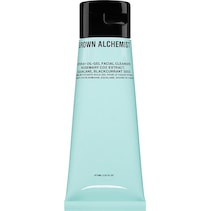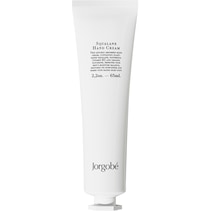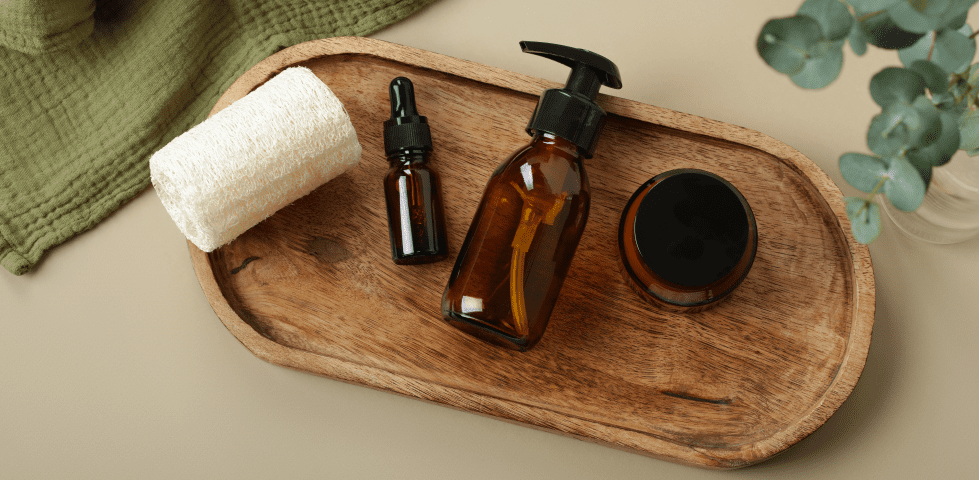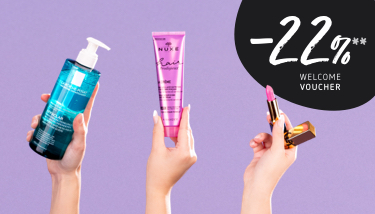- Your benefits as a Premium Member
10% off items
Free shipping from €20.00
- Help & Contact

Squalane – the versatile oil
Squalane absorbs quickly, has an antioxidant effect and can be used on its own as well as mixed into your skin cream. As a natural component of our skin’s sebum, it is suitable for every skin type and provides a fantastic glow. In addition, this vegan active ingredient has a silky feel, entirely without oily residue. Does it sound too good to be true? We have taken a close look at the popular oil.
19 October 2023 • 3 min. reading time
Table of contents
On the trail of the all-rounder: What is squalane?
Squalane is a vegetable oil with low viscosity. It is colourless and odourless. In its saturated state, it is stable against oxidation and lasts up to 24 months without preservatives. It used to be an exotic component in exclusive cosmetics, obtained from sharks’ livers. Today squalane is, fortunately, purely vegetable. It is distilled from the pomace in olive oil production or extracted from sugar cane. This vegan version is also known by the name phytosqualane. The benefits: no animals suffer, it is inexpensive to produce and it still has the same multifaceted effect on the skin.
In addition, squalane is very unlikely to cause irritation. The reason: human sebum contains up to 13% squalane. Therefore, your skin cells are already familiar with the substance and it is less likely to irritate the skin. For this reason, the active ingredient is generally also well-tolerated by sensitive skin, although you should always judge this for yourself, of course. You will find it on the INCI list under its scientific name, squalane.
But don’t mix them up!
Squalane should not be confused with squalene. Superficially, the two substances differ only by a single letter. The true differences only become apparent at a deeper level. Squalene is indeed a component of human sebum but can be problematic for oily skin and even make existing acne worse. In addition, it can block the pores and is heavily prone to oxidation, which can lead to an increase in blackheads. This undesirable property is called comedogenic by specialists and for these reasons squalene is not used in cosmetics.
Skin care with squalane
A close look at the effect of squalane
Squalane is a high spread oil. This means that it absorbs quickly and does not leave any residue behind. You will only notice a slightly moisturising feel, which is beneficial for extremely dry areas of skin. In addition, the multi-talented squalane is characterised by the following effects:
- It preserves moisture in the skin and can minimise wrinkles caused by dehydration.
- It revitalises the complexion, giving it a beautiful glow.
- Squalane has an antioxidant effect, so it captures free radicals and makes the complexion look rosy.
- As a precursor of cholesterol, squalane can stabilise the skin barrier.
Along with its nourishing and protective properties on the skin, squalane has a further effect that makes it so valuable for cosmetic products. Firstly, it ensures that fluids, serums and creams absorb faster. What's more, this substance, which is already present in the skin, works as an amazing carrier material for other active ingredients like hyaluronic acid and retinol.
Using squalane on its own or mixed
A further benefit of the active plant ingredient: Squalane is very simple to use. Generally, the product is offered in practical glass bottles with a pipette. You can integrate it effortlessly into your skincare routine by first of all applying your usual face cream. Finish by taking a few drops of squalane and massaging it gently with your fingers into the cleansed skin. This small amount is sufficient to give your cheeks a delicately nourished feel and will also make light skincare richer if you need it.
But squalane also has a place in high-quality cosmetics. It gives body lotion, face fluid, hand cream etc. the desired velvety finish and can even make silicone superfluous. In addition, it serves as a booster for other active ingredients. Therefore, squalane is suitable for skin layering, whereby various substances are layered on top of each other to strengthen their effect.
The multi-talent: squalane for your hair and baby bump
In haircare the squalane effect has long been a secret tip for a silky, shiny mane. Because unlike rich oils, it nourishes and moisturises the hair without weighing it down unnecessarily. You will find it in high-quality shampoos and conditioners as well as in leave-in conditioners and hair oils. Actually, the use of pure squalane on straw-like ends helps to add smoothness and shine. For this reason, the vegan substance is used as a substitute for the silicone, which has proved controversial.
Thanks to its high tolerability, squalane Is an ideal companion during pregnancy. It gives the skin high elasticity and can therefore help to prevent stretch marks. You can massage your baby bump regularly all over with pure squalane. This is a wonderful ritual for getting in touch with your unborn child. Babies’ delicate skin also benefits from the protective effect of squalane. Dry areas can be easily cared for without the fear of a potential allergic reaction.
Squalane FAQ
Takeaway
The cosmetic ingredient with the unusual name, squalane, certainly lives up to its reputation. It is well-tolerated and provides just about every skin type with nourishment and protection. It gives the skin a delicate, silky feel along with a natural glow. Even if squalane is not comedogenic, people with impure skin and acne should only use squalane as a component of creams or fluids. It is easy to add squalane to your skincare routine because it is well-tolerated with all active ingredients and can be simply slotted into your existing skincare routine.





















 Certified security
Certified security








